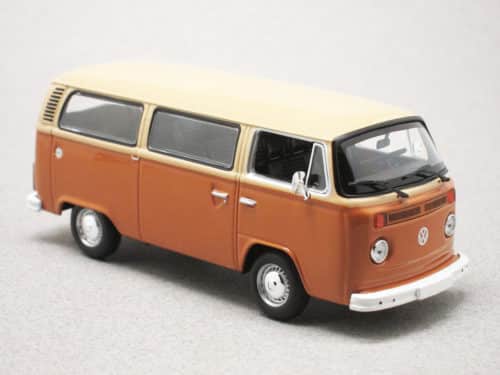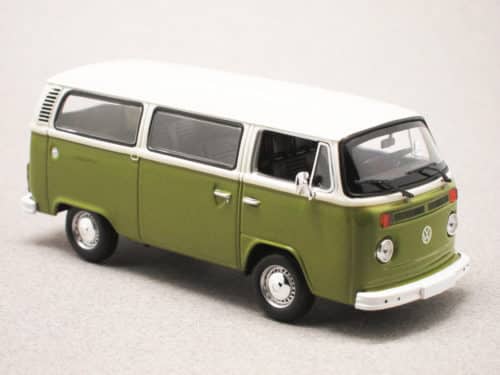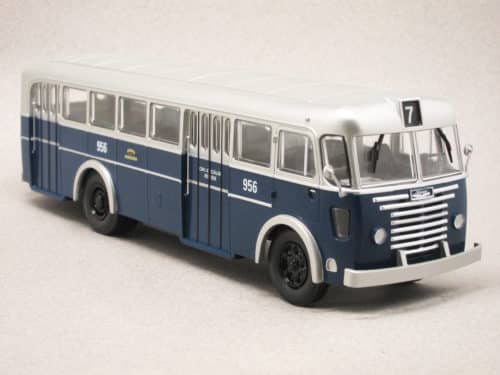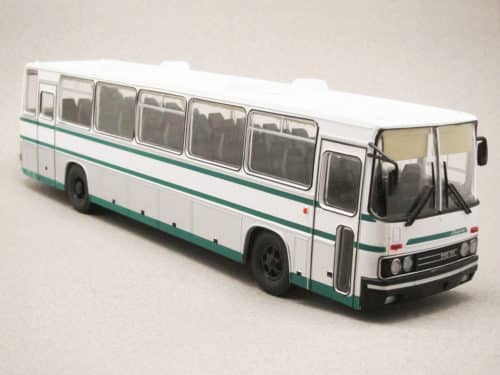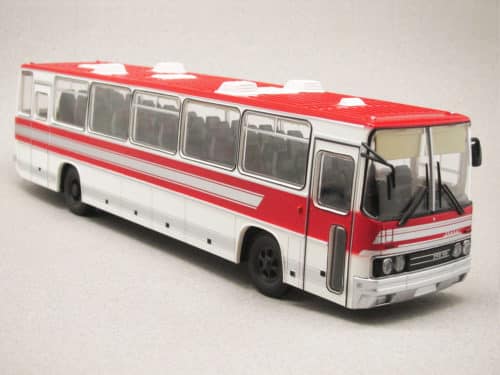Categories
- Uncategorized
- Brands
- Aspark
- Abarth
- AC
- ACMAT
- Acura
- Adler
- AEC
- Aero
- Aero Flite
- Aerocar
- AGF Serval
- Airstream
- Aiways
- Alamagny
- ALCA
- Aleko
- Alfa Romeo
- Allard
- Alpina
- Alpine
- Alvis
- AMC
- AMG
- Amilcar
- Amphicar
- Anadol
- Armstrong Siddeley
- Arnolt
- ARO
- Artz
- Aston Martin
- Auburn
- Audi
- Aurus
- Austin
- Austin-Healey
- Auto-Union
- Autobianchi
- Avia
- AWZ
- Babich
- Barkas
- Barnard
- BB
- Bedford
- Bentley
- Berkeley
- Berliet
- Bertone
- Beutler
- Bianco
- Bitter
- Bizzarrini
- BMW
- Borgward
- Bosley
- Brabus
- Brasier
- Brasinca
- Bristol
- Brütsch
- Buckle
- Bugatti
- Bugre
- Buick
- Burney
- Büssing
- Cadillac
- Caterham
- CG
- Chausson
- Checker
- Chenard & Walcker
- Chevrolet
- Chevrolet Corvette
- Chrysler
- Cisitalia
- Citeria
- Citroën in 1:18 scale
- Citroën in 1:43 scale
- Commer
- Cord
- Costin Nathan
- Covington
- Cuningham
- Dacia
- DAF
- Daihatsu
- Daimler
- Dangel
- Datsun
- DB
- De Lorean
- De Tomaso
- Delage
- Delahaye
- Denzel
- DeSoto
- Devon
- Diamond Reo
- Diamond T
- Dixi
- DKW
- Dodge
- Dome
- Donkervoort
- DS
- Dual-Ghia
- Dubonnet
- Duesenberg
- Edsel
- EMW
- Enzmann
- Excalibur
- Facel Vega
- Ferrari-en
- Fiat
- Fleetwood Enterprises
- Ford
- Freightliner
- Friedrich Rometsch
- FSO
- Fuji
- Fuso
- GAC Motor
- Gatso
- GAZ
- Ghia
- Gillet
- Ginetta
- Glas
- Glasspar
- GM
- GMC
- Goggomobil
- Goliath
- Gomolzig
- Gordon
- Gordon-Keeble
- Graham-Paige
- Gumpert
- Gutbrod
- Hanomag
- Hansa
- Hénon
- Henry J
- Henschel
- Hewson
- Hillman
- Hispano-Suiza
- Holden
- Hommell
- Honda
- Hong Qi
- Horch
- Hotchkiss
- Hudson
- Humber
- Hummer
- Hunt
- Hymer
- Hyundai
- IFA
- Ikarus
- Imperial
- IMZ
- Infiniti
- Innocenti
- Intermeccanica
- International
- Invicta
- Irisbus
- Irmscher
- Isdera
- Iso
- Isotta Fraschini
- Isuzu
- Iveco
- Jaguar
- Jamos
- Jeep
- Jensen
- Jowett
- Kahlbacher
- Kaiser
- Kalmar
- Kamaz
- Kamm
- Kenworth
- KIA
- KIM
- Koenigsegg
- Kohlruss
- KrAZ
- Krupp
- KTM
- Kurtis
- Lada
- Lagonda
- Lamborghini
- Lancia
- Land Rover
- Lanz
- LaSalle
- Laurin & Klement
- Lea-Francis
- Leichtbau
- Leningrad
- Lexus
- Leyat
- Lightburn
- Ligier
- Lincoln
- Lloyd
- LMX Sirex
- Lotus
- LTI
- LuAZ
- Lynx
- Lysell
- Mack
- Magirus
- Maico
- MAN
- Manic
- Manta Ray
- Marathon
- Marussia
- Maserati
- Mathis
- Matra
- Matra-Simca
- Maybach
- Mazda
- McLaren
- McQuay-Norris
- Melkus
- Mercedes in 1:18 scale
- Mercedes in 1:43 scale
- Mercer
- Mercury
- Messerschmitt
- MG
- Mikrus
- Mini
- Mismaque
- Mitsubishi
- Mitsuoka
- Mohs Motor Car
- MOL
- Monica
- Monteverdi
- Moretti
- Morgan
- Morris
- Moskvich
- Multicar
- Murena Motors
- Nardi
- Nash
- Neckar
- Neoplan
- Nissan
- Norman Timbs
- NSU
- Oldsmobile
- Oltcit
- OM
- Opel
- OSCA
- Packard
- Pagani
- Panhard
- Panther
- Peerless
- Pegaso
- Persu
- Peterbilt 352 H (IXO) 1:43
- Petermax Müller
- Peugeot in 1:18 scale
- Peugeot in 1:43 scale
- Phänomen
- Phantom
- Piaggio
- Pierce-Arrow
- Pininfarina
- Playboy
- Plymouth
- Polestar
- Polski-Fiat
- Pontiac
- Porsche in 1:18 scale
- Porsche in 1:43 scale
- Porsche in 1:87 scale
- Praga
- Puma
- Rambler
- Ramses
- Rapid
- Reliant
- Renault in 1:18 scale
- Renault in 1:43 scale
- Reyonnah
- Riley
- Robur
- Rochet – Schneider
- Rolls-Royce
- Rosengart
- Rover
- RUF
- Ruhrfahrzeugbau
- Saab
- Sabra
- Sachsenring
- Salmson
- Saurer
- Saviem
- SC Johnson Wax
- Scania
- Schlörwagen
- Scion
- Seagrave
- Seat
- Setra
- SFM
- Shanghai
- Shelby
- Shelter
- Siata
- Simca
- Simson
- Singer
- Sinpar
- Skoda
- Smart
- Smeal
- SMZ
- Spyker
- Steyr-Puch
- Stout
- Stratos
- Studebaker
- Stutz
- Subaru
- Sud-Aviation
- Sunbeam
- Suzuki
- Syrena
- Talbot
- Tarpan
- Tata
- Tatra
- Tesla
- Thunderbolt
- Thurner
- Toyopet
- Toyota
- Trabant
- Triumph
- Triver
- Troll
- Tucker
- TVR
- Uaz
- UNIC
- Unimog
- Vanden Plas
- Vauxhall
- Vector
- Velam
- Vemac
- Venturi
- Veritas
- Voisin
- Volkswagen
- Volugrafo
- Volvo
- Walter
- Wanderer
- Ward LaFrance
- Warszawa
- Wartburg
- White Company
- Wiesmann
- Wikov
- Willème
- Willys
- Wolseley
- Yamaha
- Yugo
- Zagato
- Zastava
- Zaz
- Zil
- ZIS
- Zündapp
- Zunder
- Cars
- Commercial vehicles
- Competition
- Advertising vehicles
- Concept cars
- Fire and Rescue
- Police cars
- Ambulances/Hearses
- JAPAN IMPORTS
- Buses
- Movies and TV series
- 1:18 SCALE SELECTION
- 1:64 scale selection
- 1:87 scale selection
- Tour de France
- Campers
- Helicopters
- Accessories
- All Citroën 2CVs!
- Manufacturer news
- Minicarweb selection
- Gift wrapping
- FLASH SALES
Manufacturers
Sales !
Useful information
Newsletter
Tags
Tags
Buses
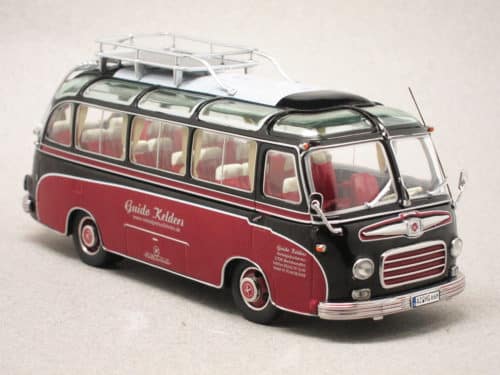
Setra S6 black & red (Schuco) 1:43
Founded in 1951, the German company Kässbohrer-Setra was rapidly renamed Setra to be easier to pronounce. However, the logo placed at the front of its coaches remained the letter K. The 9,30 m/366 in.- long S8 has a capacity of 38 seats and was launched in 1951. Then the shorter S6 (6.70 m/264 in.), with its 25 seats, was released in 1955, when Daimler-Benz had (already) acquired Setra.
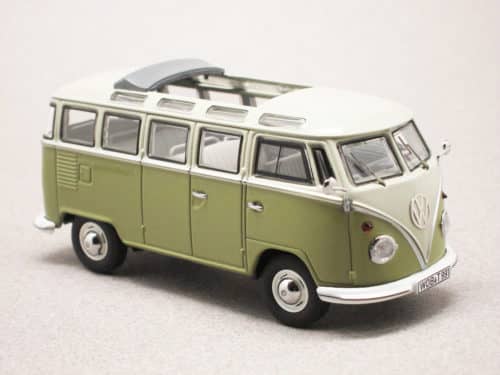
Volkswagen T1 Samba green (Schuco) 1:43
Launched in 1950, the famous T1 is the second Volkswagen model sold after the Beetle. This explains why its name is Type 2. But this first-generation Kombi is also retroactively called T1, to distinguish it from the updated versions that followed! Here we have the lovely minibus Samba, produced in 1951, with its 8 roof windows and its opening canvas roof.

In stock
Lambo. Aventador Roadster Ultimae (LookSmart) 1:43
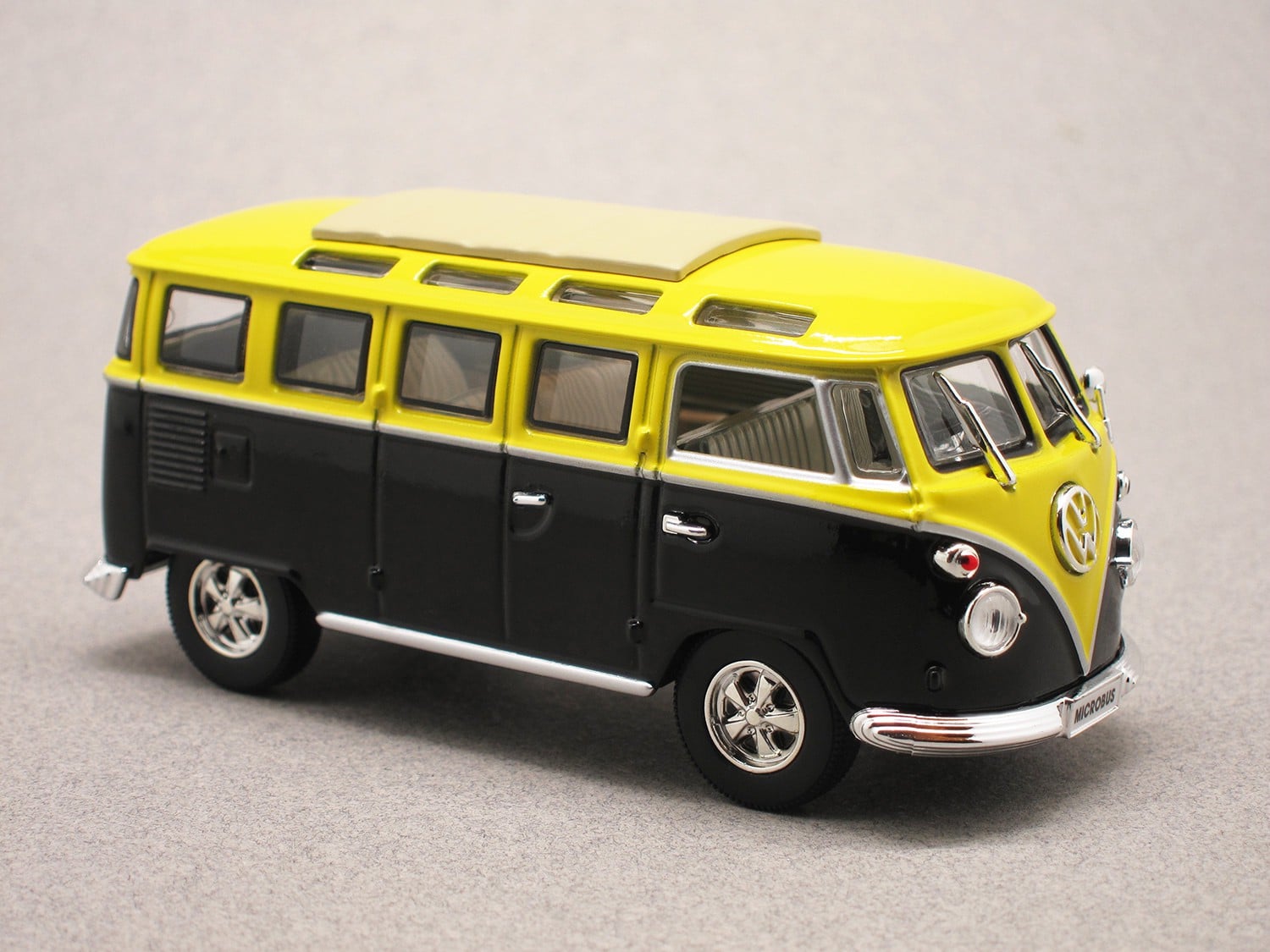
In stock
Volkswagen T1 Samba (Lucky Die Cast) 1:43
Launched in 1950, the famous T1 is the second Volkswagen model sold after the Beetle. This explains why its name is Type 2. But this first-generation Kombi is also retroactively called T1, to distinguish it from the updated versions that followed! Here we have the lovely minibus Samba, produced in 1951, with its 8 roof windows and its opening canvas roof.
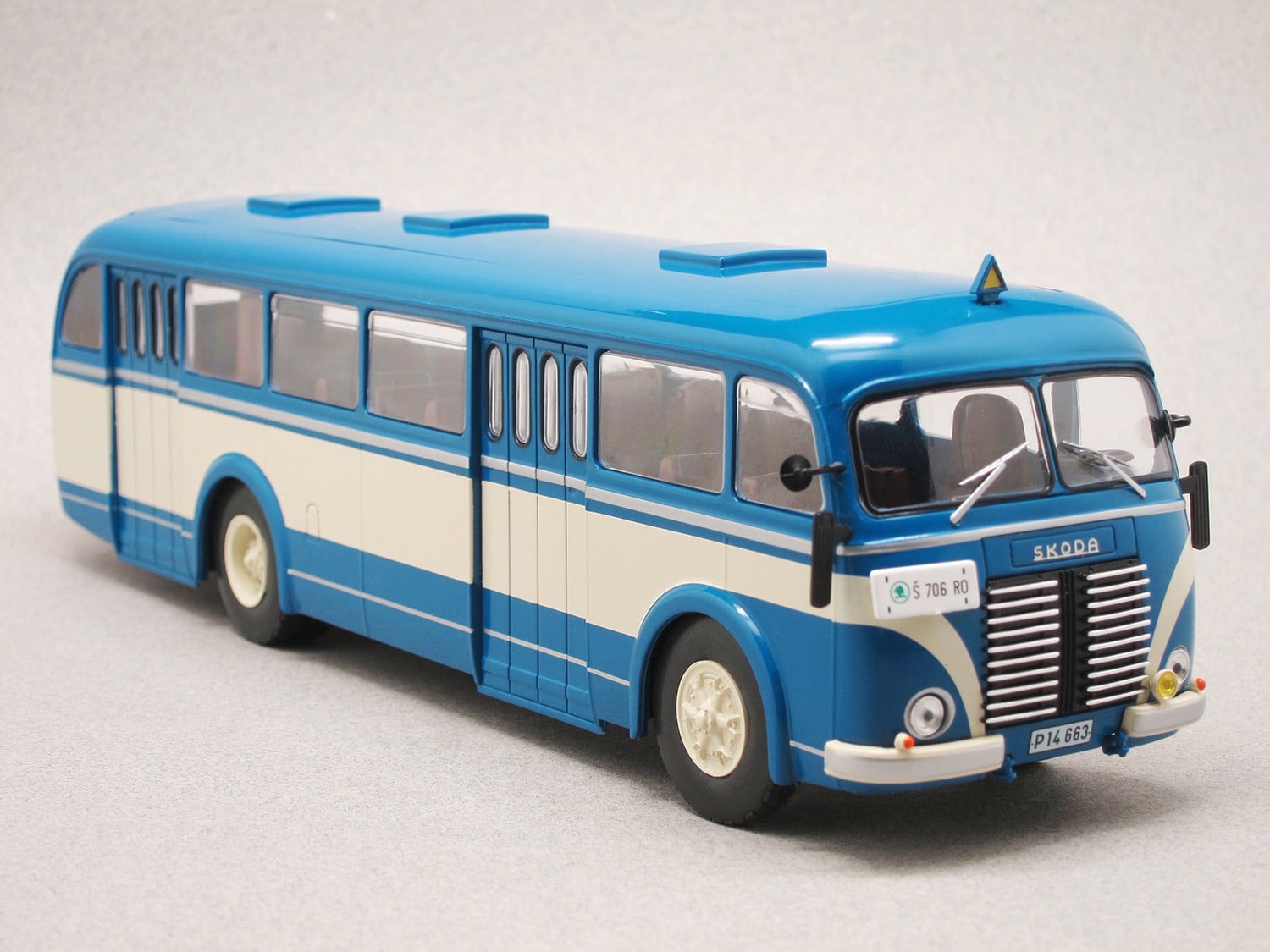
In stock
Skoda 706 RO (IXO) 1:43
Skoda was the main automobile manufacturer in Czechoslovakia's Soviet era. Bought in 1991 by Volkswagen, this brand has long been known for its small rear-engined sedans. Skoda also manufactured lorries and buses, such as this 706 RO marketed from 1946 to 1958 and intended, depending on the configuration, for public urban or road transportation.
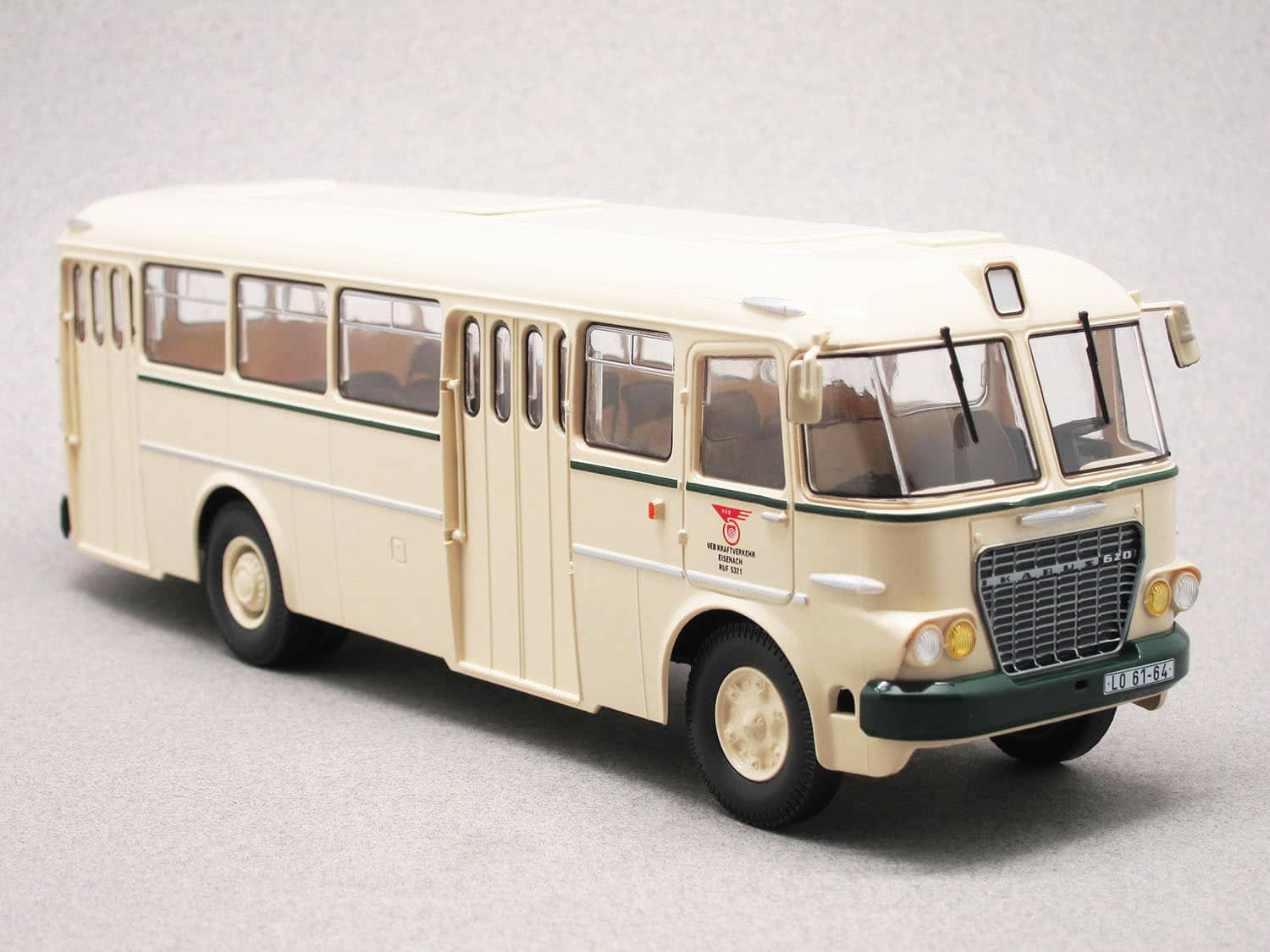
In stock
Ikarus 620 (Premium ClassiXXs) 1:43
This Hungarian bus manufacturer was founded in 1895. In 1999, Irisbus, a brand created by a joint venture between Renault and Iveco, bought Ikarus, which then went bankrupt in 2007. Today, Ikarus has been established again under other capitals. This 1961 Ikarus 620 is a 9.35 m/368 in-long front-engined compact bus manufactured between 1959 and 1972.
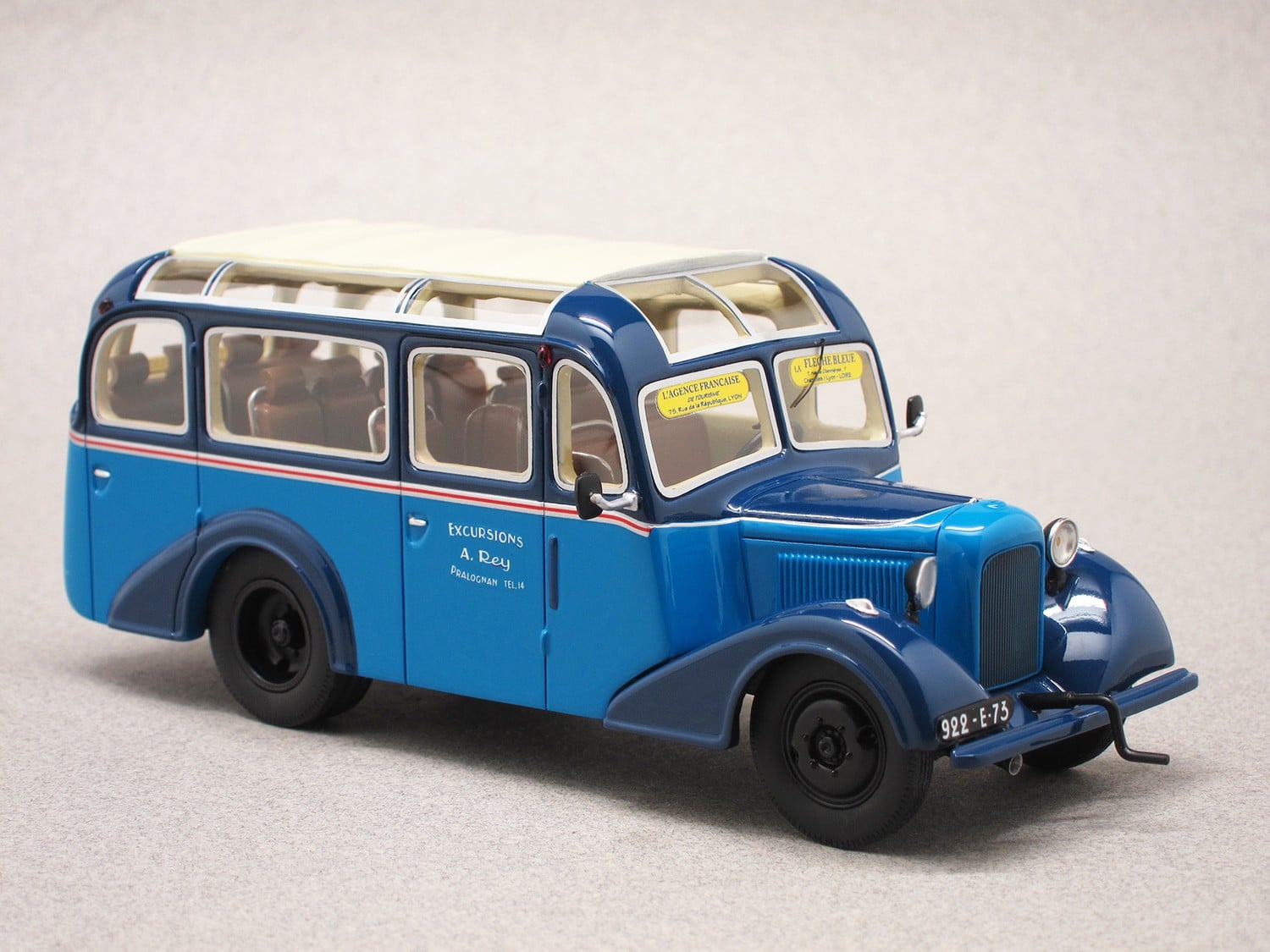
In stock
Unic L20 Chaussende & Faurax closed (Perfex) 1:43
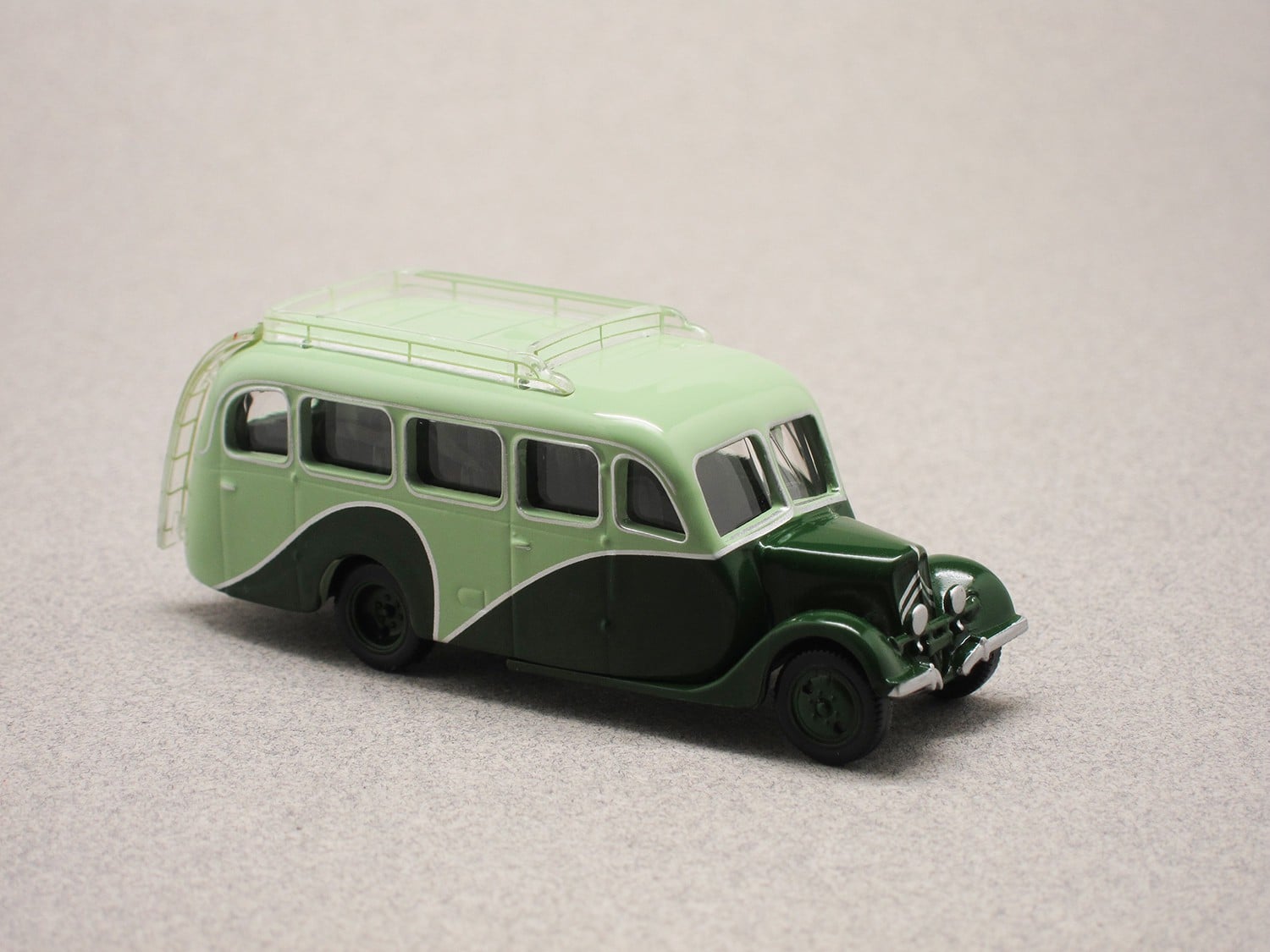
In stock
Citroën U23 1947 bus green (Norev) 1:87
The platform of this utility vehicle released in 1935 was still used at the end of the 1960s. Here we have a 1947 model year, whose design remains close to the original U23. This version was transformed into a coach. This Norev diecast model is in 1:87 scale, the equivalent of the HO scale of model trains.
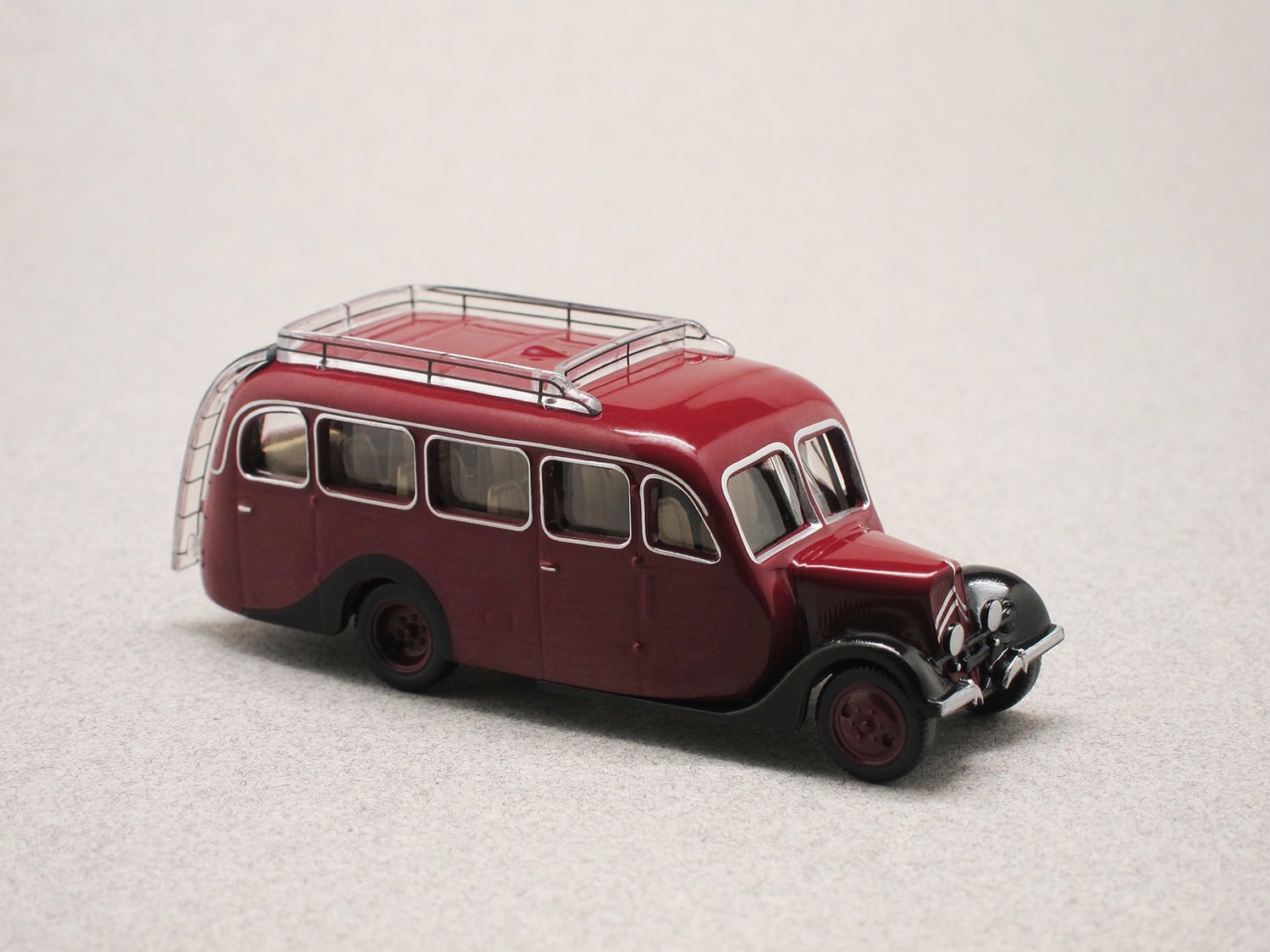
In stock
Citroën U23 1947 bus red (Norev) 1:87
The platform of this utility vehicle released in 1935 was still used at the end of the 1960s. Here we have a 1947 model year, whose design remains close to the original U23. This version was transformed into a coach. This Norev diecast model is in 1:87 scale, the equivalent of the HO scale of model trains.
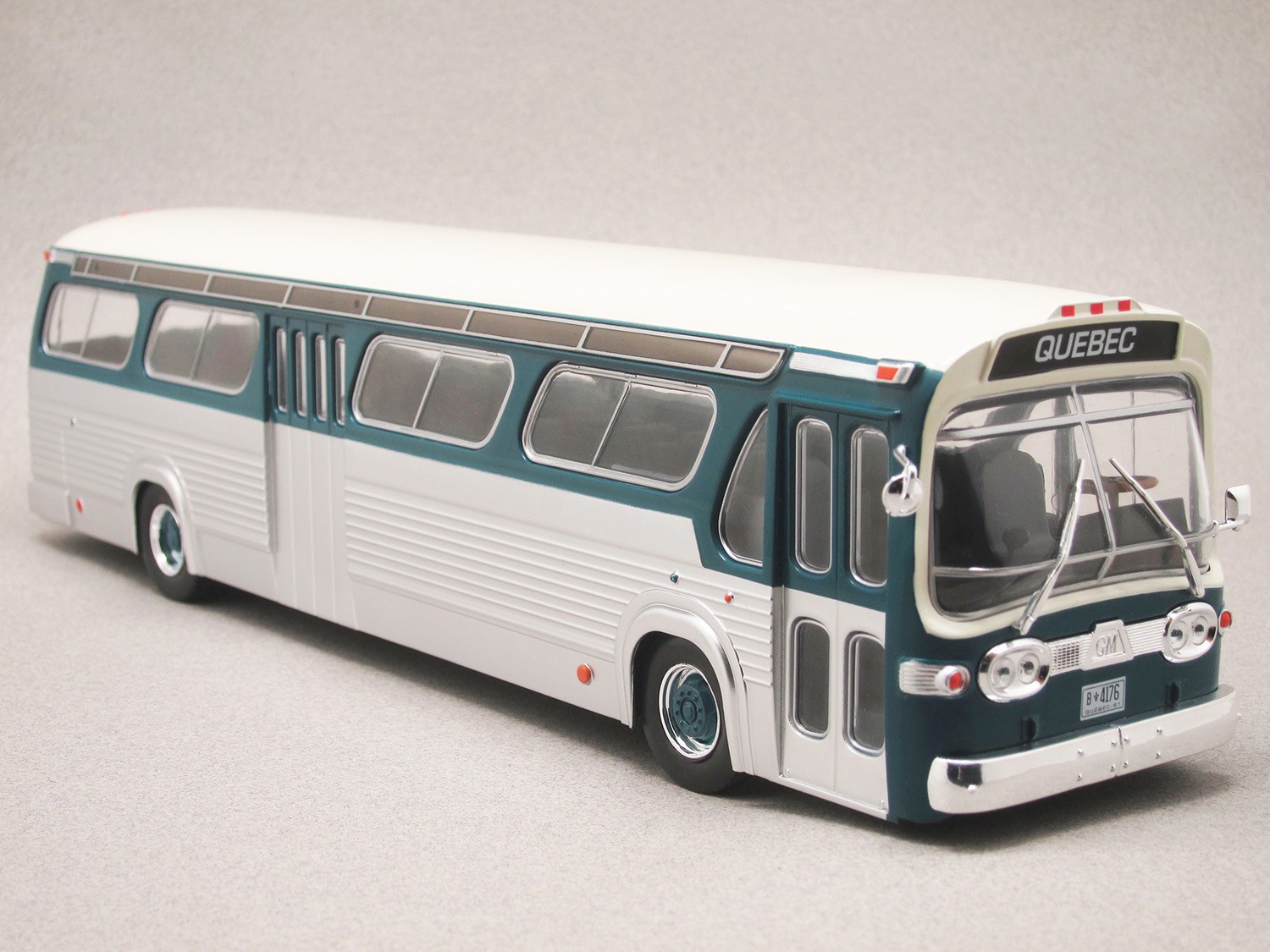
In stock
GMC New Look Fishbowl 1969 (IXO) 1:43
Between 1958 and 1977, more than 44,000 units of the GMC New Look, also called Fishbowl, were produced in the United States (until 1985 in Canada). The one we have here was used in Quebec. It is a 1972 model year, which means it receives the three lights above the windshield that appeared in 1968 and an exhaust outlet on the left side, installed from 1972.
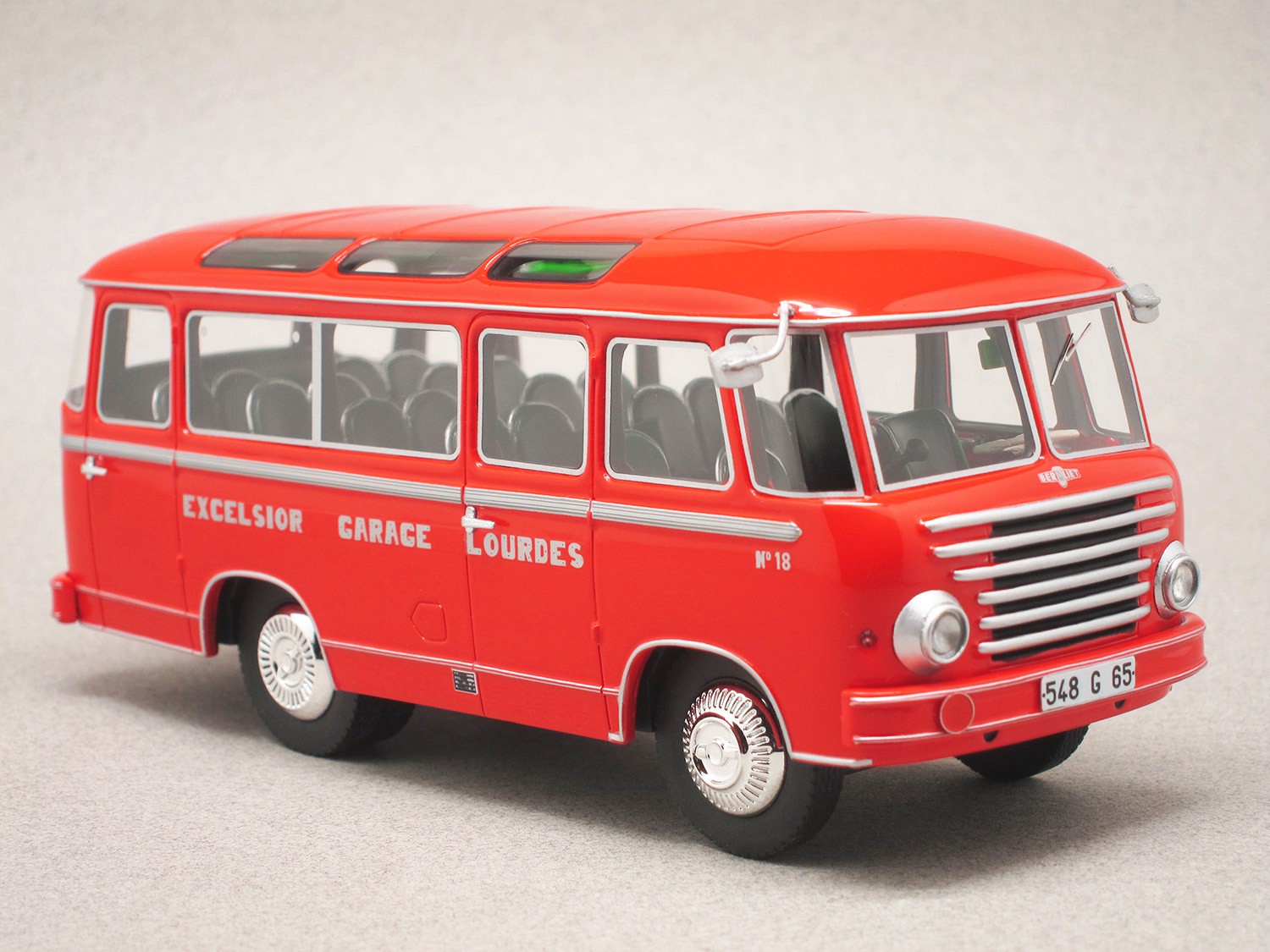
In stock
Berliet GLA 5S Dubos 1951 (Perfex) 1:43
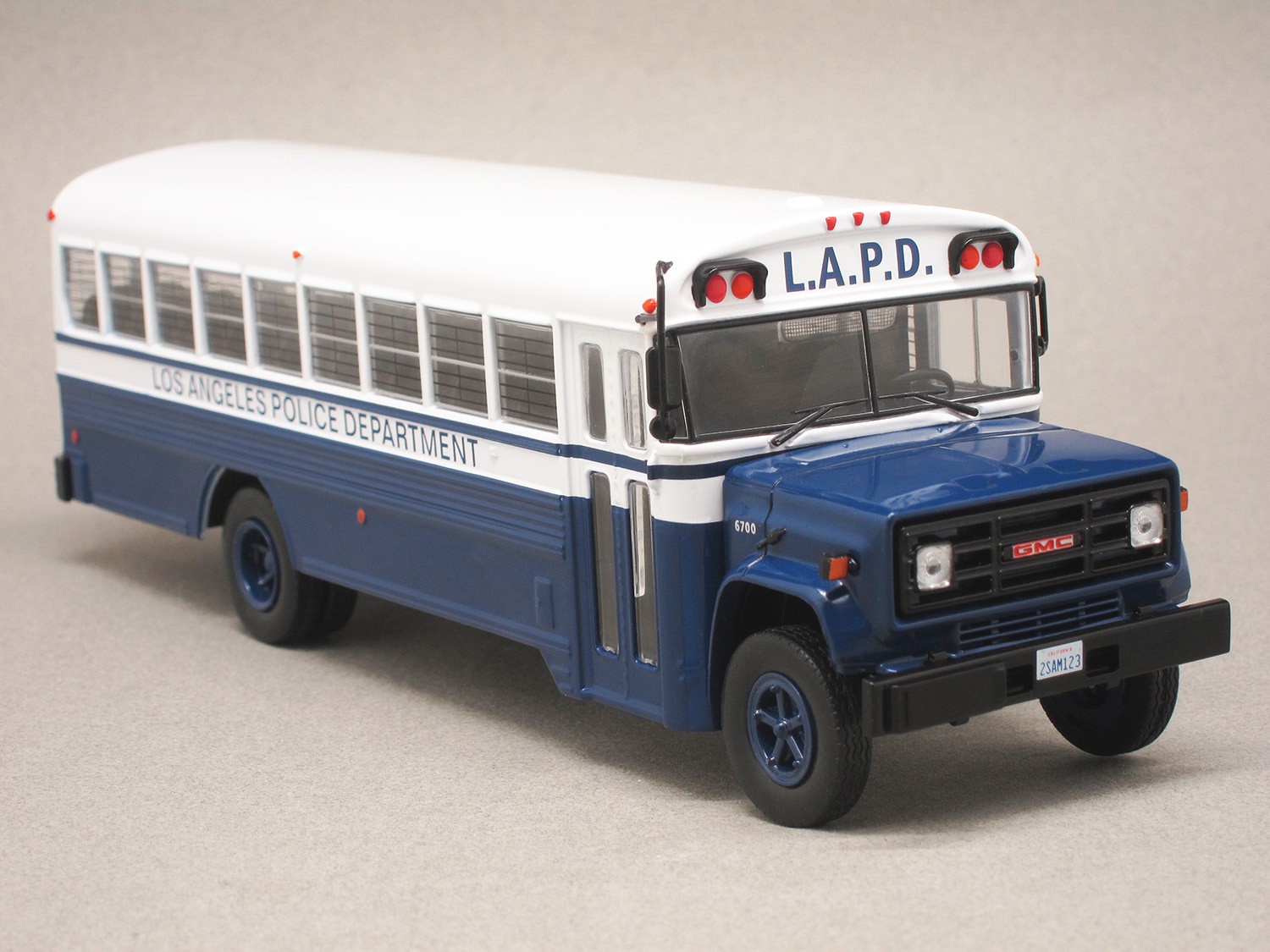
GMC 6000 LAPD (IXO) 1:43
This bus, often used as a school bus, is based General Motors’ B series. The first generation was released in 1966 under the GMC brand. The following year, Chevrolet also integrated it in its own catalogue. The range was renewed in 1984, but despite being vaguely updated, the design belonged to another age. This 1988 GMC 6000 belongs to the Los Angeles Police.
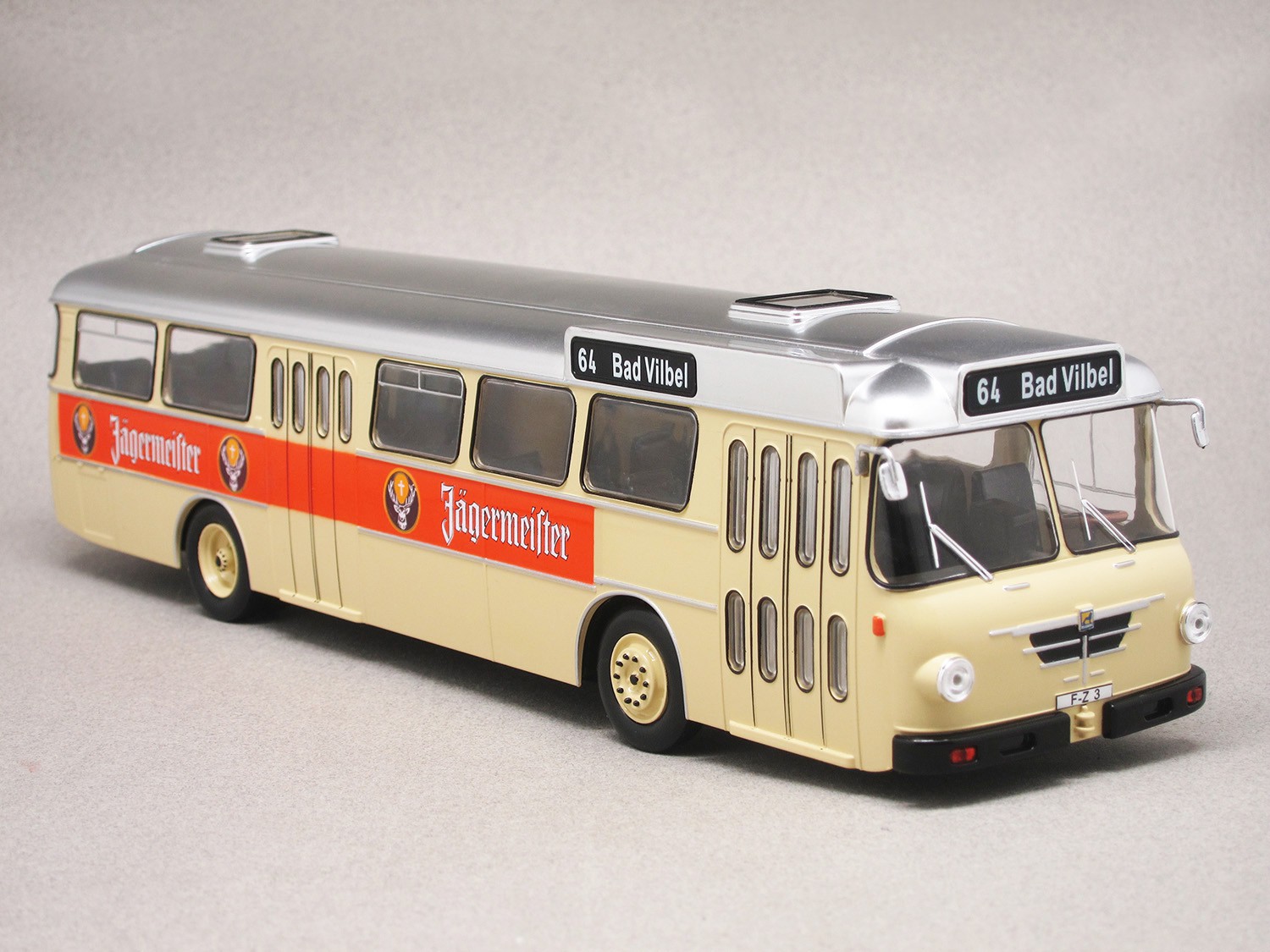
In stock
Büssing Senator 12D (IXO) 1:43
Heinrich Büssing, then 60, with his two sons, founded the German brand Büssing in 1903. MAN will finally swallow up this brand in 1971. This Senator was built in the 1960s. A double-decker variant also existed, but here we have a model with only one level, serving the city of Bad Vilbel, north of Frankfurt in Germany.
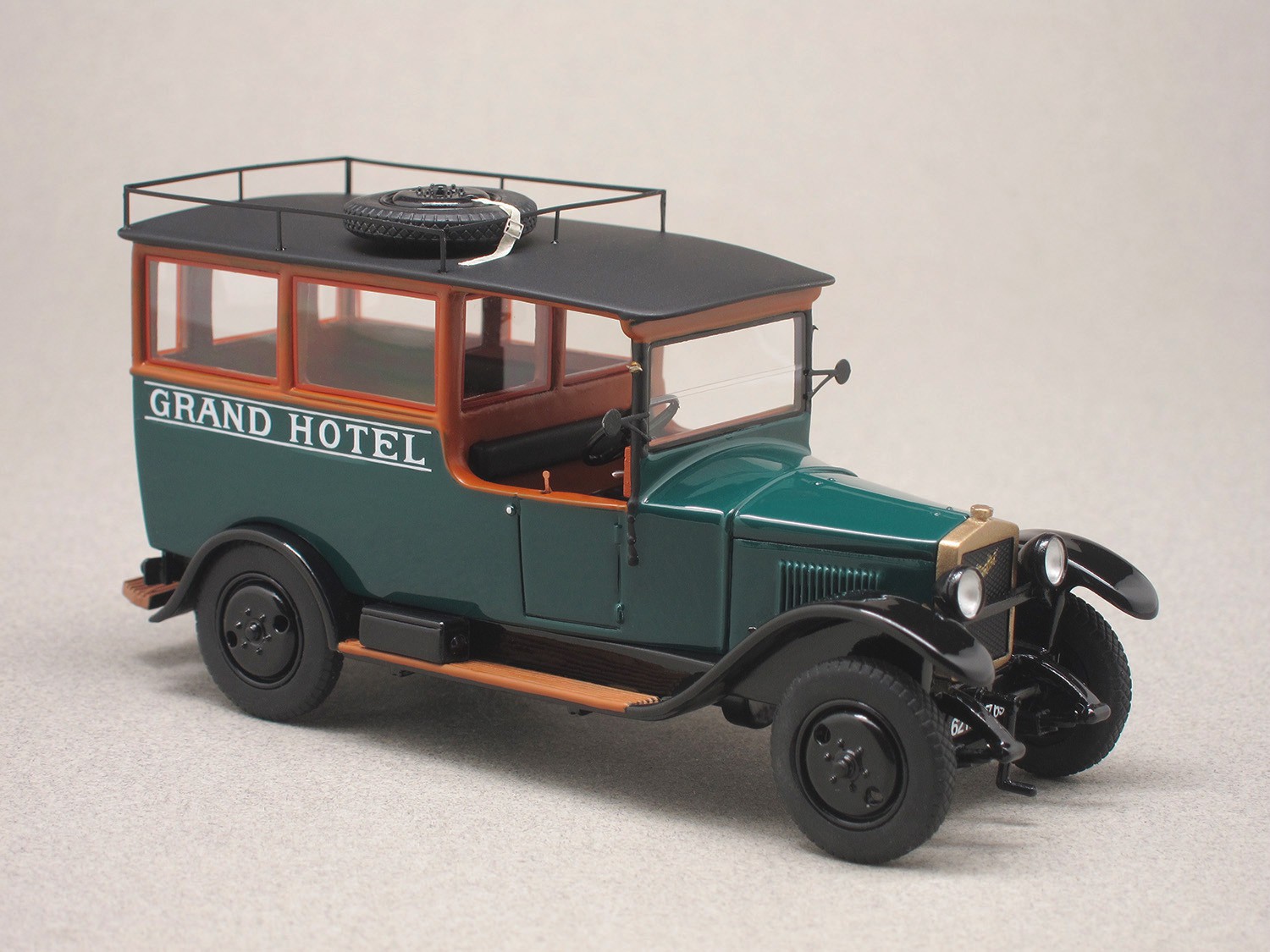
In stock
Berliet VHA Grand Hotel 1924 (Perfex) 1:43
This Lyon-based company founded in 1901 merged into Renault in 1980. Berliet built some cars, but is mainly famous for its trucks and coaches. This 1924 VHA succeeded the 1CB, already available in the Perfex range. This vehicle was based on a chassis that could be bodied as a “boulangère” (baker’s van), a van or an omnibus, which is the cas of this version intended for luxury hotels.
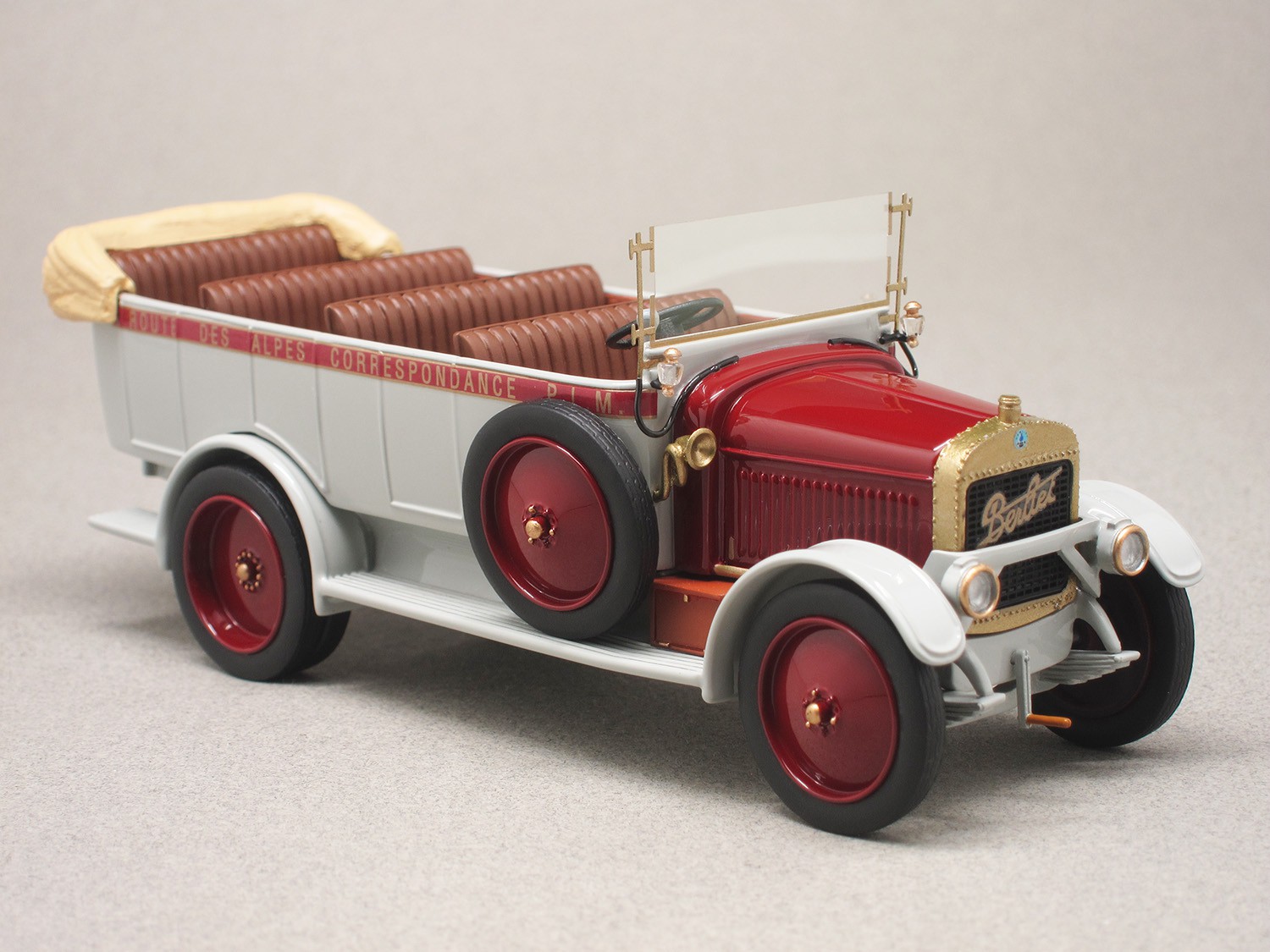
In stock

